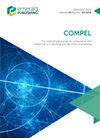利用毫米波散射的雷达截面统计进行目标分类
IF 1
4区 工程技术
Q4 COMPUTER SCIENCE, INTERDISCIPLINARY APPLICATIONS
Compel-The International Journal for Computation and Mathematics in Electrical and Electronic Engineering
Pub Date : 2023-06-28
DOI:10.1108/compel-12-2022-0446
引用次数: 0
摘要
目的探讨基于目标雷达截面(RCS)的目标分类问题。目标的波长、尺寸和距离天线的距离分别为1 mm、1 m和10 m。设计/方法/方法考虑近场RCS,采用物理光学近似进行数值计算。为了模拟实际场景,作者假设入射角是一个窄区间内的随机变量,并对RCS的随机实现进行了反复观测。然后,从样本中计算RCS的直方图。作者根据RCS直方图使用最近邻规则对不同形状的导电板进行分类。该设置被认为是毫米波雷达交通道路标志分类的简单模型。通过一组具有代表性的数值算例,说明了该算法的性能和局限性。本文提出的方法扩展了现有的工具,使用近场RCS直方图作为目标特征来实现分类算法。本文章由计算机程序翻译,如有差异,请以英文原文为准。
Target classification using radar cross-section statistics of millimeter-wave scattering
Purpose
This paper aims to discuss the classification of targets based on their radar cross-section (RCS). The wavelength, the dimensions of the targets and the distance from the antenna are in the order of 1 mm, 1 m and 10 m, respectively.
Design/methodology/approach
The near-field RCS is considered, and the physical optics approximation is used for its numerical calculation. To model real scenarios, the authors assume that the incident angle is a random variable within a narrow interval, and repeated observations of the RCS are made for its random realizations. Then, the histogram of the RCS is calculated from the samples. The authors use a nearest neighbor rule to classify conducting plates with different shapes based on their RCS histogram.
Findings
This setup is considered as a simple model of traffic road sign classification by millimeter-wavelength radar. The performance and limitations of the algorithm are demonstrated through a set of representative numerical examples.
Originality/value
The proposed method extends the existing tools by using near-field RCS histograms as target features to achieve a classification algorithm.
求助全文
通过发布文献求助,成功后即可免费获取论文全文。
去求助
来源期刊

CiteScore
1.60
自引率
0.00%
发文量
124
审稿时长
4.2 months
期刊介绍:
COMPEL exists for the discussion and dissemination of computational and analytical methods in electrical and electronic engineering. The main emphasis of papers should be on methods and new techniques, or the application of existing techniques in a novel way. Whilst papers with immediate application to particular engineering problems are welcome, so too are papers that form a basis for further development in the area of study. A double-blind review process ensures the content''s validity and relevance.
 求助内容:
求助内容: 应助结果提醒方式:
应助结果提醒方式:


